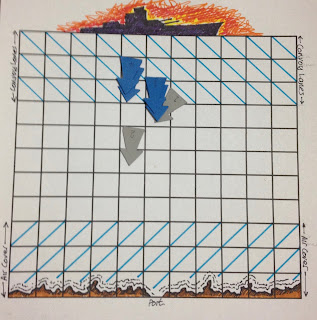My wargaming hobby (by which I mean collecting, modelling, painting and gaming) has three distinct periods in my life. Each one influenced by a particular book or game. While other books have contributed, these items have been the catalyst for me.
The first item of influence is the book "Introduction to Battle Gaming" by Terrance Wise. My Mother bought this for me in the early 1970's for my birthday. It was her attempt to get me to read (something I had stubbornly refused to do with any enthusiasm) and it worked. This book introduced me to wargaming and all the opportunities of scratch building and converting my Airfix figures. Over the next few years I tried to emulate many of the armies shown in this book. I was hooked.
The second item is the
starter set "Battle for Macragge"
for the 4th edition of Warhammer 40,000. Purchased mid-2000's with my son as the "let us do this together". Up to this point my wargaming has ceased for many years with moving countries, marriage, career and kids. Everything was boxed up and unfortunately all my old Airfix armies thrown away (moving countries causes many unused items to be shed).
Wargaming in the 40,0000 universe meant I had a shared interest with my son and a conversation with him. As he was soon to move into the adolescent stage were a grunt is a form of communication. I really enjoyed to building of models and painting aspects of wargaming. As Warhammer 40,000 allows, and encourages, this creative aspect of the hobby. I kept up with the rules at the beginning, even going in to a competition, admittedly to keep my son company. Overtime I gave up on the rules due to the tedious need to constantly check the rulebook to see which rules applied.
The third item was purchased out of curiosity around 2015. The book "One-Hour Wargames" by Neil Thomas has been the trigger for me getting out my old metal miniatures (which I did manage to keep) out of their boxes and back on to the tabletop. I liked the simplicity of the rules, the thinking behind them, and how you can quite easily add to them to create home written rulesets to a level of complexity to suit one's tastes.
I am now enjoying my historical wargaming as much as I did back when I started wargaming as a hobby. This last period of my wargaming hobby I have been merrily bogging about.
This is a bit of a filler post as I have been messing around with my WW2 rules while I decide how best to approach my Napoleonic project. The good news for me is I will be starting the project next week having identified a free set of rules I can tailor to a square grid. The rules are from the blog
Numbers, Wargames and Arsing About by Jay (Old Trousers) who has a number of free games and rulesets. Some are influenced by other rulesets which have been reworked and reimagined for different periods and use a grid-based approach with hexes.
I plan to convert the game
Waterloo a la Carte to a square grid for my tabletop.
 |
| A WW2 game from earlier in the week |


















































